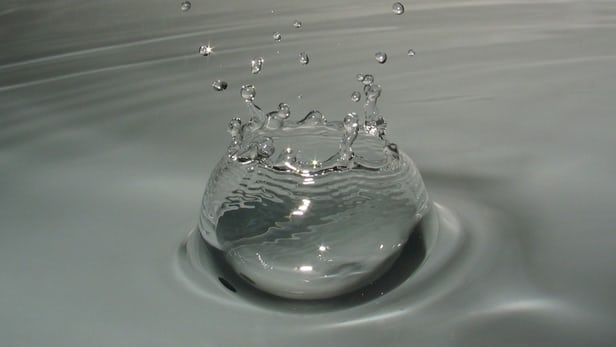Scientists see electricity pass through water molecules for the first time

Scientists have gained a new insight into how water conducts electricity(Credit: Roger McLassus)
It's a well-known phenomenon, seen in action when hundreds of reindeer on melting permafrost were recently killed by a lightning strike and the same reason villains in horror movies lob hairdryers into the bathtub. Water is a very good conductor of electricity, but the precise manner in which the individual molecules pass along the positive charge has been difficult to observe. For the first time, scientists have now laid eyes on this electrified relay race, adding to our understanding of one of chemistry's most fundamental processes.
We do know that water conducts electricity through a process called the Grotthuss mechanism. This was first proposed in 1806 by German chemist Theodor Grotthuss, and is a process that sees protons tear through the fluid through a shifting network of loose bonds connecting the individual water molecules.
But because the protons are relayed to neighboring molecules almost instantly, the process is too fast and the vibrations between the molecules are too severe to be observed with spectroscopy, where a molecule is blasted with light and the scattered photons reveal clues about its structure. Well, not traditional spectroscopy anyway.
Scientists at Yale University have been working to adapt spectroscopy so that they can observe the molecules handing off the protons to the next in line. They made some progress by figuring out how to freeze the chemical process, slowing it down to give them time to visualize the molecules at work. But their early attempts at this, which relied on infrared scanning, produced snapshots that were still too blurry, as a result of the vibrating chemical bonds.
So the team changed their approach and began trying to observe the proton exchange in what's known as "heavy water," which was chilled to almost absolute zero. The difference between this and regular water is that hydrogen atoms are switched with a heavier isotope called deuterium, the upshot of which is that bonds vibrate less.
And it was through this technique that the researchers were able to create much sharper images of the protons in motion, revealing how they temporarily change their structure when receiving a proton, and again when they are passing it off.
"In essence, we uncovered a kind of Rosetta Stone that reveals the structural information encoded in color," says Yale chemistry professor Mark Johnson. "We were able to reveal a sequence of concerted deformations, like the frames of a movie."
Such a discovery might not have immediate applications, after all the scientists didn't manipulate the process they simply watched it play out. But with this new insight into how water conducts electricity, it could lead to better understanding of the chemical processes that occur on the surface of water, of which there is some scientific debate. Further down the track, it could lead to improved energy technologies and new kinds of pharmaceuticals.
The research was published in the journal Science.
Source: University of Washington, Yale
